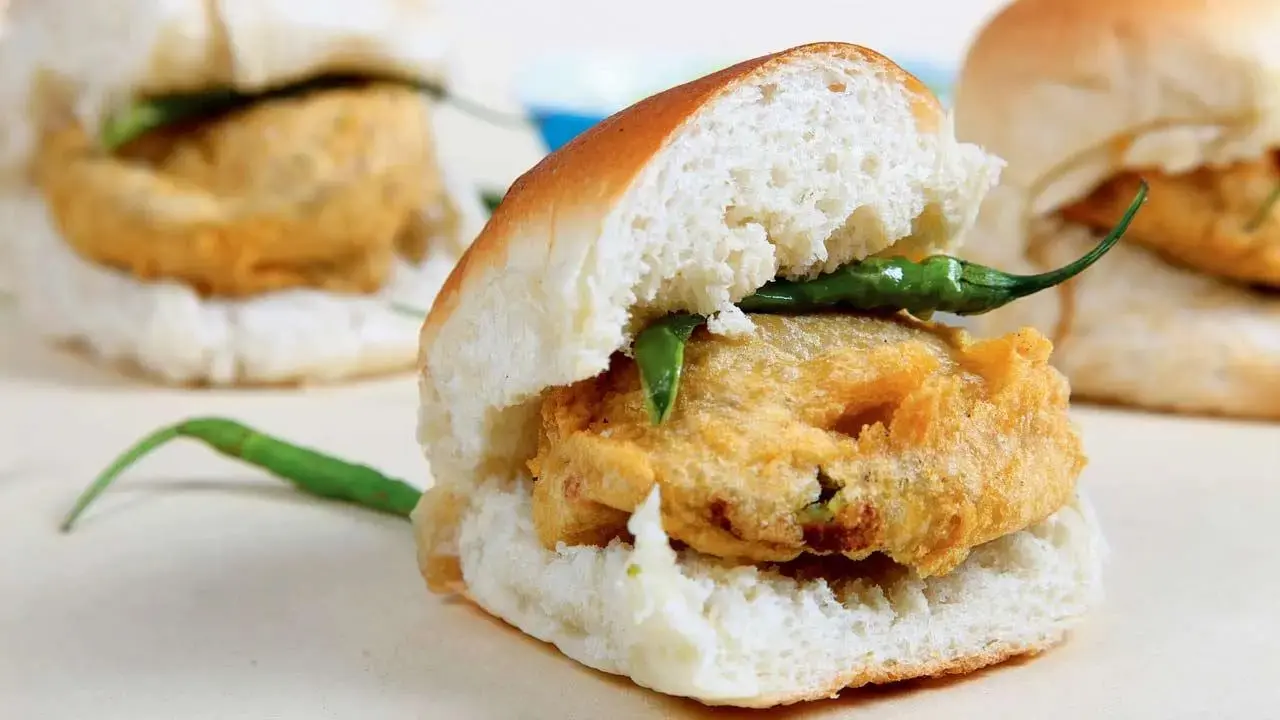
The recent spotlight on samosas and jalebis due to the health advisory by the Union Health Ministry in July had led to quite a stir among Indian street food lovers. While the health messaging about hidden fats and excess sugar in various food items is not for vendors, it certainly serves as a warning for people who consume them frequently, especially so that they can check on how healthy these foods are, and how we are consuming them.
Among the many street foods popular in the city, the vada pav is Mumbai’s favourite street food, and undoubtedly nobody will give it up even for the sake of health. However, dietitians say there is more to the fried snack than meets the eye and express the need for caution. While there are minimal benefits, and the vada pav is tempting, they say it is important to monitor the consumption for health benefits because the most important factor is the nutrition content of vada pavs.
Nutrition content of vada pavs
So, what is the nutrition contents of a vada pav? Gulnaaz Shaikh, chief dietitian at KIMS Hospitals in Thane explains, “A single vada pav is around 250 to 300 calories, depending on the size of the pav and how much oil is used to deep fry the vada. Most of the macronutrients tends to be carbohydrates and fats. There is little protein and almost no fibre unless you add any vegetables. A vada pav is also high in sodium, particularly if you have chutneys or fried green chillies with it.”
Fauziya Ansari, who is the dietitian at Apollo Spectra Hospital in the city, further breaks it down. She explains, “A vada pav is high in refined carbohydrates, unhealthy fats, and sodium, with very little protein, fibre or vitamins. It’s calorie-dense but low in essential nutrients, making it a poor choice for regular consumption. One batata vada (50 grams) gives around 150-200 calories; the calorie count may vary based on the size and ingredients used. However, a vada pav will contain about 300 calories.”
While the calories are between 250 to 350 depending on the ingredients, Amreen Sheikh, chief dietitian at Fortis Hospital Mulund, adds that the carbohydrates are between 45–50 gm, while the protein are 3-4 gm, depending on how much besan is used, and fat is 12 – 15 gm, which mostly gets added from frying oil, and the fibre is barely 1-2 gm, and the sodium is 400 – 600 mg, which is usually due to the chutney and salt in batter and bread.
Samosa or Vada Pav: Which is healthier?
If one had to choose among two of Mumbai’s favourite street foods – samosa and vada, it would be very difficult but Sheikh helps you out. She shares, “Vada and samosa are both deep fried snacks, but they are different. Samosa is rich in fat and calories; the outer layer of a samosa is made from maida which absorbs oil easily, and the filling is made with potato and peas. A vada, which is usually made of besan (gram flour) and potato is without the maida layer, and besan adds some protein, and usually has slightly less fat. One serving of a vada (without pav) generally has less fat and fewer calories than a samosa. A plain vada is always better than a loaded samosa. Still, the actual health effect varies depending on amount and how it`s cooked.”
On the other hand, Shaikh has other thoughts, as she sees a different side. “Both are fried snacks but if we had to pick a lesser evil, I`d say a samosa would be slightly better as it typically has more vegetables like peas and carrots in its filling,” she says, continuing, “But again, it depends on how it’s made. Homemade versions of both, using healthier methods, can be far better than what’s sold on the street.”
When health comes into picture, Ansari is very strict with her advice. “Both vada and samosa are unhealthy as they are deep-fried and high in oil, refined flour, and calories. It is not advisable to eat both vada and a samosa as people can suffer from issues such as weight gain, high cholesterol, acidity, and blood sugar spikes. They also offer very little nutritional value and can strain digestion. So, stay away from vada and samosa,” she concludes.
